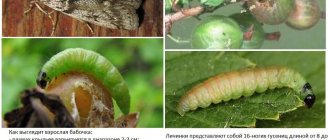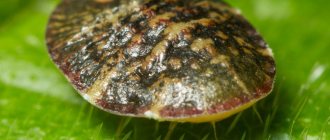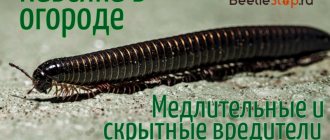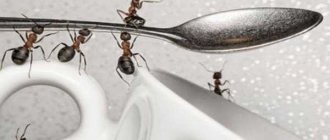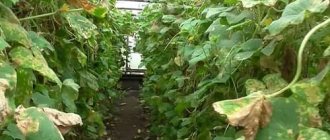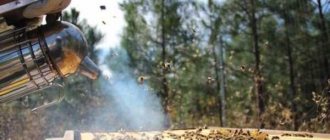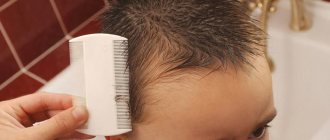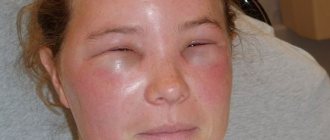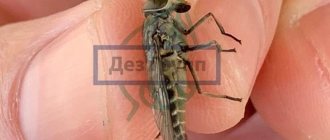Scale insects on an orchid are quite common if the flower is not properly cared for. The orchid is a very beautiful indoor flower that is easy to care for. If you do not maintain temperature conditions, do not maintain humidity and do not water the flower correctly, you may encounter insects that very quickly attack the plant.
You should start worrying as soon as you notice spots on a flower, wilting of a plant or plaque on the leaves. Scale insects are the most common pest of orchids, so it is important to know the “enemy” by sight, and it is also important to know how to fight it. In this article we will learn what types of scale insects exist and what harm they can cause to an orchid, as well as how to deal with annoying pests.
Definition: what kind of parasite is this?
The scale insect (family Diaspididae) and the false scale insect (family Coccidae) are representatives of the order of homoptera insects of the suborder Coccidae. Insects feed on the sap of plants (household, garden and forest) from:
- leaves;
- shoots;
- fruits;
- branches;
- trunks.
Depending on the species, the body can be rounded or elongated. Color varies from light to dark brown. Sometimes there is a purple tint. The body of the scale insect is covered with a waxy shell, which is protection for the future generation.
False scale insects are distinguished by the fact that they do not have a shell, and the larvae and eggs are protected by the dying skin of the female. The size of the scale insects of adult insects does not exceed 5 mm, and the size of the false scale insects does not exceed 7 mm.
Insect larvae are called strays. When they hatch from eggs, they spread throughout the plant. Juveniles are oval-shaped, light yellow in color and very mobile. They have eyes, three pairs of legs and antennae.
Stragglers attach to leaves and stems. The limbs gradually die off.
Insects are covered with a dense wax shell. The color of the shell varies from white to brown. The larvae molt twice and develop into adult females and males. Males become mobile. They grow legs and wings, but their mouthparts are atrophied. After fertilization they die. Depending on the species, females lay eggs under the shield or give birth to larvae (up to 1000 pieces). Then they die.
Species that parasitize orchids
Scale insects affect many orchids, but more often than others they settle on plants with hard elastic leaves: paphiopedilums, dendrobiums, stangopeas, cymbidiums, cattleyas, phalaenopsis, bletillas, pleion.
The most famous types of scale insects seen on orchids are:
Palm tree (Diaspis boisduvalii) is a whitish-yellow or light brown insect. The female's body is short-oval, the scutellum is round. The protective shell of the male is long. More often it settles on palm trees, especially young fan palms, and banana plants, but if an orchid is nearby, it also moves to its foliage.
Palm (Diaspis boisduvalii)
Orchid (Pseudoparlatoria parlatorioides) - the body of the insect is ovoid, the scutellum is rounded and convex, yellowish-brown in color with two larval skins, often extending beyond the scutum. Males have an oblong carapace, with almost parallel opposite edges, the same color as that of the female. Larvae and adult females damage the leaves; yellowish spots form on them around the puncture sites. In addition to orchids, it also parasitizes other plants.
Orchid (Pseudoparlatoria parlatorioides)
Bromeliad (Diaspis bromeliae) – yellowish-cream color, small, only up to 2.5 mm long. The body is pear-shaped and appears translucent. The scutellum is rounded, in the male it is long. Harmful to palm trees, orchids and bromeliads.
Bromeliad (Diaspis bromeliae)
Orchid comma (Lepidosaphes machili) – the female’s body is elongated, but the front part with the head is narrower than the rest. Its scutellum partly follows the shape of the body, curved, in the shape of a comma, expanding towards the back. The male has an elongated carapace. Only affects orchids.
Orchid comma (Lepidosaphes machili)
Oleander (Aspidiotus nerii) - females are yellowish, with a rounded-ovoid shield, males have an elongated shell shape and are covered with reddish spots. They parasitize many plants - olive, palm, orchid, laurel, and are found on yucca, oleander, asparagus, acacia and other plants.
Oleander (Aspidiotus nerii)
The soft scale insect (Coccus hesperidum) is a viviparous insect that can give birth to up to 1 thousand young individuals. The scutellum is flat, elliptical, yellow-brown in color, with a distinct vein in the middle. The insect's body is asymmetrical and broadly elliptical. Settles on leaf blades on the lower and upper sides, on stems and tuberidia.
Soft scale insect (Coccus hesperidum)
Hemispherical false shield (Saissetia coffeae) - named for the shape of a flat-convex shield, reaching a length of 4 mm, smooth and dark brown to blackish in color. After the eggs mature, the female dies, the shell rises, and the larvae crawl at a very fast pace along the leaf or stem.
Hemispherical false scale (Saissetia coffeae)
How to determine its appearance?
Seeing the pest at the beginning of its development is a difficult task (due to its small size - 0.3 mm long).
- The first symptoms of scale insect infection are sticky orchid leaves. This is a sticky honeydew that clogs the pores and prevents the plant from breathing. The insect secretes it during its life.
- Then small yellow-brown tubercles appear, which are located on the leaf blades, young shoots and orchid flowers. Gradually the number of such yellow spots becomes larger.
Timely measures taken to destroy the pest will help save the orchid.
Application of growth stimulants and nitrogen fertilizers
When getting rid of pests, you should not use :
- Various fertilizers;
- Growth stimulants.
At the time of illness, the orchid will not grow new leaves and it will not accept the stimulant. Therefore, an excess of nitrogen fertilizing will lead to softness of the leaf plates and the possibility of their rotting. All the flower needs is a poison that will rid it of the pest.
How to fight insects and cure a flower?
First it is necessary to carry out mechanical processing. Stages of orchid processing:
Thoroughly wash the window and window sill with disinfectants.- To catch active insects, use sticky tapes that are placed near the flower.
- Leaves and shoots with a degree of infection greater than 50% should be cut off.
- Replace topsoil.
- Wash the leaves and flower stalks with warm water using a soft brush and soapy water (to remove sticky honeydew).
- Dry the plant for 1-1.5 days.
- Carry out treatment using folk, biological or chemical means (depending on the degree of infection).
The treatment is repeated after 7-10 days.
Folk recipes
At the initial stage of infection, folk remedies are used:
| Means | Application |
| Garlic | Finely chop and apply to the insect attachment site, or rub with half a slice. |
| Garlic and soap |
|
| Onion | Rub the pest or fill the finely chopped onion with water and then spray the plant. |
| Alcohol | Spot-processed. But be careful, as it can cause leaf burn. |
| Vegetable oil | Two tablespoons per 1 liter of water. |
Biological agents
If folk remedies do not help, you can treat with biological or chemical agents.
| A drug | Action, application |
| I cheated | Causes death of eggs and larvae. It is necessary to spray so that the entire plant is covered with the preparation so that it “drips from the plant.” Till the soil thoroughly. |
| Fitoverm | It provokes paralysis of pests and they stop feeding. Death occurs on the third day after treatment. Full effect – after 6-7 days. |
| Nemabact | The nematode contained in the preparation integrates into the larva and destroys it. |
| Avertin | Leads to paralysis by affecting the nerve endings of parasites. |
Chemicals
| Insect | Appropriate use of drugs |
| Shchitovka | Intestinal and systemic action. |
| False shield | Intestinal, systemic and contact action. |
The absence of a durable shell in false scale insects does not prevent the penetration of contact poison.
| Name | A drug | Operating principle |
| Intestinal |
| They begin to act only after the pest enters the body. |
| System |
| The active substance enters the plant juice through the roots and leaves. Makes it poisonous to parasites. |
| Contact |
| Penetrates the body of pests through the skin. |
Biological and chemical agents must be used strictly according to the instructions. After any treatment, flowers should not be placed in direct sunlight, so as not to cause burns on the plant.
When using oil-based preparations, the solution is applied pointwise - only to the insect. If the product is sprayed, the pores on the leaves may become clogged, oxygen starvation and, as a result, the death of the plant.
Next, you can watch a useful video on how to deal with scale insects on an orchid:
What is the danger of the pest
Scale insects feed on plant sap, which they suck from plants. Phalaenopsis and Cymbidium orchids are at risk. After drinking the juice, the scale insect injects poison into the voids that appear. Affected leaves become covered with multi-colored spots and soon die.
Honeydew secreted by females contributes to the development of fungal diseases. It envelops the plant, interfering with the process of photosynthesis. Due to lack of sunlight, orchids quickly weaken and die. The sweet, sticky substance attracts ants. Small pests multiply quickly, affecting neighboring plants.
Prevention of re-infection
Preventative actions for the reappearance of pests are as follows:
- cure the orchid from other diseases (if any);
- create favorable conditions for growth and flowering (required level of lighting and humidity);
- If infected specimens are identified, immediately quarantine them and begin pest control;
- Keep “newcomers” in pots separately from other flowers (2 – 4 weeks).
If an orchid is infected with scale insects or false scale insects, urgent measures must be taken. Otherwise, the flower may die, and not only shed buds or leaves. Control methods depend on the personal preferences of the owner and the degree of infestation.
If you find an error, please select a piece of text and press Ctrl+Enter.
Types of scale insects
differs from the false scale insect :
- Scale insects have a convex shell;
- False scale insects have a flat shell.
There are different types of scale insects that are found on orchids:
- Californian;
- Brown;
- Oleander;
- Palm;
- Cactus.
You can add scale insects to your home collection by purchasing a new plant that is already infected and has larvae on it.
IMPORTANT! Any new plant must be quarantined, where it will stand separately from other plants for 2 weeks. This time is necessary to ensure the health of the plant.
Thrips
The presence of thrips on an orchid will be indicated by a change in the color of the leaves, the appearance of small dots and streaks on the underside of the leaf blades, as well as a silvery film on any part of the plant. The reason for this external change is small, almost transparent insects that feed on orchid sap. Damage from them is very similar in appearance to damage from spider mites, but has a stronger and more pronounced effect. These insects are dangerous because they hide in the substrate and cannot always be detected in time. However, thrips damage not only the roots, but also the leaves and flowers of the orchid. And these pests can grow on absolutely any orchids.
Reason for appearance
Most often it is a neighboring plant damaged by thrips. The risk of infection is especially likely when air humidity is low.
How to get rid of thrips
It is extremely difficult to get rid of thrips: these pests have wings and therefore can easily move from the orchid to other plants. That is, such insects pose a danger to all inhabitants of the home flower garden - therefore, at the first sign of damage to the orchid by thrips, you need to take action immediately.
First of all, you need to wash the orchid well under a warm shower. As with spider mites, this will not completely rid the plant of pests, but it will help reduce their population.
Then all damaged areas of leaves must be cut back to healthy tissue.
At the final stage, the plant should be sprayed with BioKill or Fitoverm according to the instructions, repeating the procedure twice more every 10 days.
Thrips on an orchid leaf
Folk remedies
After moving the orchid into quarantine, it can be sprayed with a daily infusion of onion or garlic, crushed into a pulp - 1 tsp. for 1 glass of water.
Olive oil mixed with water also helps against thrips. They spray the orchid with it. To prepare the product you need to mix 2 tbsp. oils with 1 liter of water.
Thrips most readily settle on the inside of leaves. Therefore, the best prevention would be regular inspection of the orchid leaf plates.
It is especially important to do this in the warm season, as well as during the heating season, when the air humidity in houses and apartments decreases greatly, and the temperature increases.
Instructions
First you need to prepare the solution, observing the dosage:
- The granular product must be diluted. Typically, flower growers take a 1.4 g sachet. Prepare a mother solution - part of the granules is dissolved in a small amount of water. Then it is brought to the required volume by adding the remaining dry matter and water according to the instructions. Shake well before use.
- The liquid product should be diluted in the same proportions and dosage as the granular product.
- For spraying, the optimal dose is 1 g per 10 liters of water. This amount is enough to process about 120 plants. If you need to water at the root, use 4 g per bucket of water.
What should you not do?
It is prohibited to use products that contain nitrogen, stimulants or growth regulators to eliminate parasites. Possible names include Zircon, Epin. These drugs will only increase the reproduction and spread of the pest. It is also not recommended to collect scale insects by hand . In this way, you violate the integrity of the shell and open a passage for the young individuals that live under it.
Did you buy a new flower or was it given to you? Congratulations! But we recommend keeping the pot separate from other orchids for 10 days. This is necessary to ensure that your pets are not exposed to pests. On our portal we will tell you in detail how to deal with mites, including spider mites, thrips, midges, mealybugs, aphids, beetles and other small insects.
Folk recipes
After preliminary measures, you can directly treat infected orchids from scale insects. Among the most popular and effective folk remedies are the following:
- Soap-alcohol solution. Add 15-20 g of liquid or laundry soap per liter of warm water, mix and pour in 10 ml of alcohol. Whip the mixture a little to make foam, and use a soft brush to apply it to the affected parts of the plants.
Important! It is extremely undesirable to spray soft and thin-leaved orchids with a soap-alcohol solution, since such varieties show increased sensitivity to any product containing alcohol!
- Oily liquid. To prepare it, you need to mix a couple of tablespoons of olive oil with a liter of water. The resulting product is used to spray infected flowers. In those areas where the spray jet does not penetrate, treatment is carried out using a brush.
- Garlic cloves. Divide the garlic cloves into pieces and wipe the damaged areas with the slices. You can also pass the garlic through a press and apply the resulting pulp with a toothbrush.
- Fern decoction. Pour 10 g of dry raw material or 100 g of fresh herb with water and leave at room temperature for a day. Then boil for half an hour, filter, let cool and spray the infected plants with the prepared product. Treatment must be carried out daily for a week.
Important! It is prohibited to use an infusion of hot pepper when treating orchids for scale insects, since these delicate plants will not tolerate such a stressful procedure!
Preparations made from natural ingredients work slowly, so the treatment will need to be repeated several times. In addition, do not forget that before starting the procedure, any of the above remedies must pass a test - apply the solution to a small area of one of the leaves and leave for several days. If during this time it does not lose its brightness and does not wither, it means that the orchid tolerates the chosen drug calmly and it can be used.
Means of struggle
Aktara
The drug destroys aphids, whiteflies, thrips, scale insects, false scale insects, and soil flies. Aktar contains thiamethoxam, which completely eliminates pests.
Thiamethoxam completely decomposes in the soil, dissolves in water, and is absorbed by phalaenopsis from the ground. Aktara affects the digestion of parasites, they immediately stop feeding on the orchid.
Aktara effectively and quickly destroys pests.
Pour 4 g of the drug into 5 liters of water, and then use. You can place the flower pot in this solution for a few minutes, or you can spray the leaves and water the substrate with the solution.
Aktar can be safely mixed:
- With zircon;
- Ribav-extra;
- Epin.
Aktellik
Actellik is considered an analogue of the drug Bi-58, which is prohibited for use in Russia.
Actellica contains pirimiphos-methyl. Sold in canisters of 3-5 liters, in ampoules of 2-5 ml, which are filled with a concentrated emulsion, in the form of a wettable powder.
Parasites die within 10 minutes to several hours.
The composition destroys: aphids, thrips, scale insects, whiteflies, caterpillars, various mites, mealybugs.
Actellik is classified as a hazard class 2 drug.
Use only freshly prepared solution. Pour a 2 ml ampoule into 2 liters of water.
If there are a lot of parasites, then dilute 1 ampoule per 1 liter of water. Treat the plant on the loggia.
Moisten the entire surface of the orchid leaves and stems with the solution, then pour it under the root.
After a week, repeat the treatment.
Cover the treated orchid with a plastic bag and place it for 1-2 days in a well-ventilated room that you do not enter.
Actellik is incompatible with Bordeaux mixture and products containing copper.
To treat with the drug, wear special clothing, gloves, a respirator, and safety glasses.
Do not eat, smoke or drink while spraying phalaenopsis with the preparation.
Then take off your overalls and wash all exposed parts of your body with soap and water. Rinse your mouth. Eat a few tablets of activated charcoal and drink milk.
Place the packaging and container in a plastic bag, tie it, and burn it. Break the ampoules before doing this.
If necessary, antidotes for Actellik are atropine sulfate, R-AM.
Fitoverm
It contains aversectin C and is obtained from a soil fungus.
Fitoverm destroys mites, thrips, scale insects, aphids, and mealybugs.
To destroy parasites that reproduce on phalaenopsis, dilute 1 ampoule in 0.5 liters of water. Make 4 treatments with an interval of 10 days, since the drug does not eliminate the larvae.
In addition, pour the Fitoverm solution onto the substrate in the pots.
The main advantage of Fitoverm is its low danger to humans.
To eliminate mites, remove the phalaenopsis from the pot. Destroy the pot itself. The plant will lie quietly for a week without substrate.
Wash the orchid roots thoroughly with hot water, then dissolve 1 mg of fitoverm in 1 liter of water and treat the plant. Use only freshly prepared solution.
Cover the orchid with a plastic bag for a day. Place the bag with the culture in a bowl and place it in a place illuminated by the sun.
After 10 days, apply the treatment a second time. Then rinse the roots with hot water and plant in a new pot.
After 5 days, water the plant with water.
Agravertine
This is a transparent emulsion placed in glass ampoules of 5 and 10 ml. Parasites do not adapt to the drug.
Agravertine destroys mites, aphids, and thrips. It paralyzes the larvae and adults, they cannot feed and then die.
The drug affects insects for 2-6 days. To treat phalaenopsis, pour 5 ml of the drug into 2.5 liters of water. Treat by moving the plant to the bathroom, to the loggia. Moisten the entire plant with a sprayer.
Wait until the orchid dries, place it in the sun, but not in direct rays.
Advice! If there are a lot of parasites, repeat the treatment after a week.
General information
According to the general encyclopedia, scale insects are small hemiptera insects that belong to the superfamily of scale insects. This name is due to the presence of a hard covering of the body, reminiscent of a shield.
This peculiar shell consists of 1 or 2 connected skins, under which there is a waxy secretory part (scale insects secrete a sticky liquid). False scale insects do not have a hard shell. Instead, insects have a thin shield formed from dying skin. Insects do not secrete liquid, but inject poison into the plant.
REFERENCE! The shell of scale insects is part of the body; it is firmly attached to the body. Pseudoscale insects have a thin shell that can be easily lifted. The sticky substance secreted by scale insects provokes the onset of sooty rot.
Features of mealybug
The mealybug is a fairly large insect with a characteristic appearance. Despite the fact that this insect can be easily seen without special equipment, many novice gardeners notice it too late, which makes it very difficult to get rid of such a pest.
The length of the insect varies from 0.3 to 1 cm. The male and female can be easily distinguished externally. The female has an oval-shaped body, it is covered with white powder wax, she has long thread-like mustaches and a large number of short legs. The pest larva is similar in appearance to the female, but it is much smaller. Males are winged insects that look like a mosquito or fly. Males do not have mouthparts, so they cannot harm the plant.
How dangerous are scale insects for plants? Such sucking insects use plant cell sap as food. The growth of the bush on which the pests have settled initially becomes slower, then the plant stops growing and developing altogether. As a result of their vital activity, such pests produce honeydew, or honeydew, which is a sticky sweet liquid. Honeydew is a favorable environment for the development of various fungal diseases, and sooty fungus most often settles on it. Such an insect injures all organs of the plant (both the root system and above-ground parts) and can easily move to another bush located nearby. The most common types are: greenhouse lamella, bamboo, citrus, seaside, grape, Australian grooved, root, bristle and Comstock.
